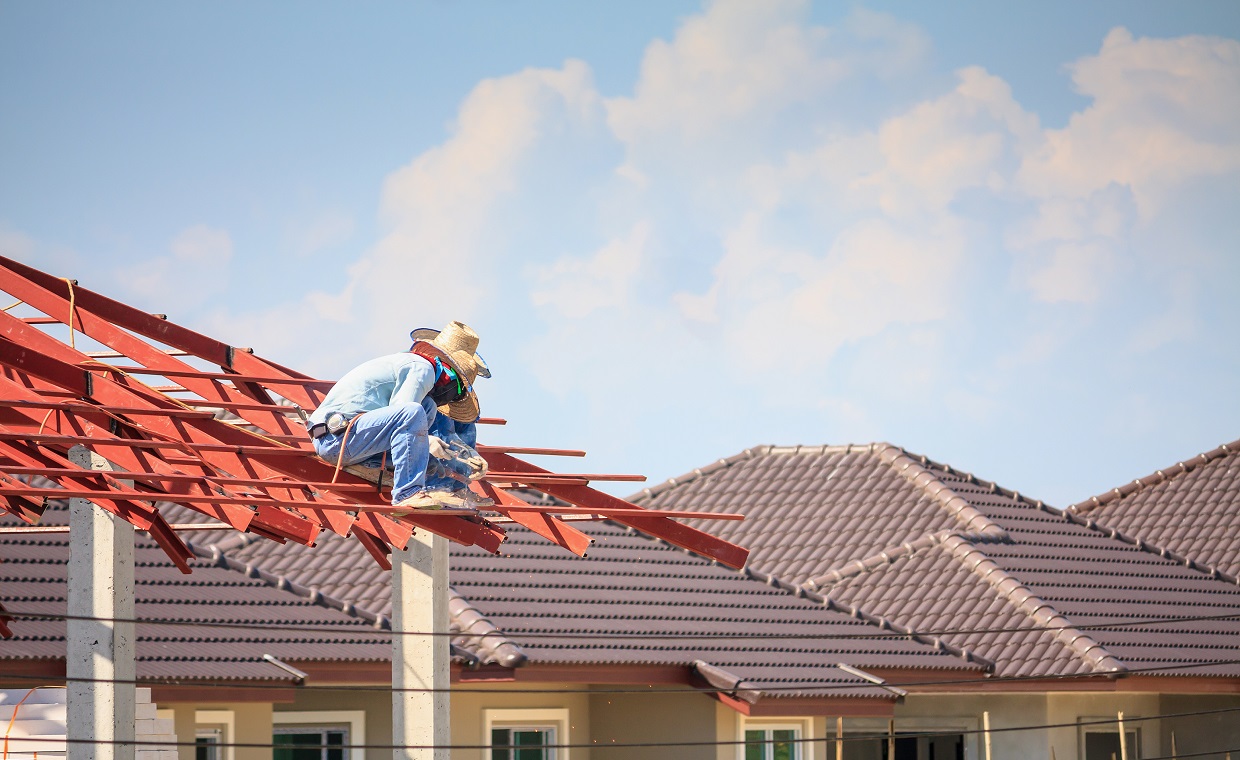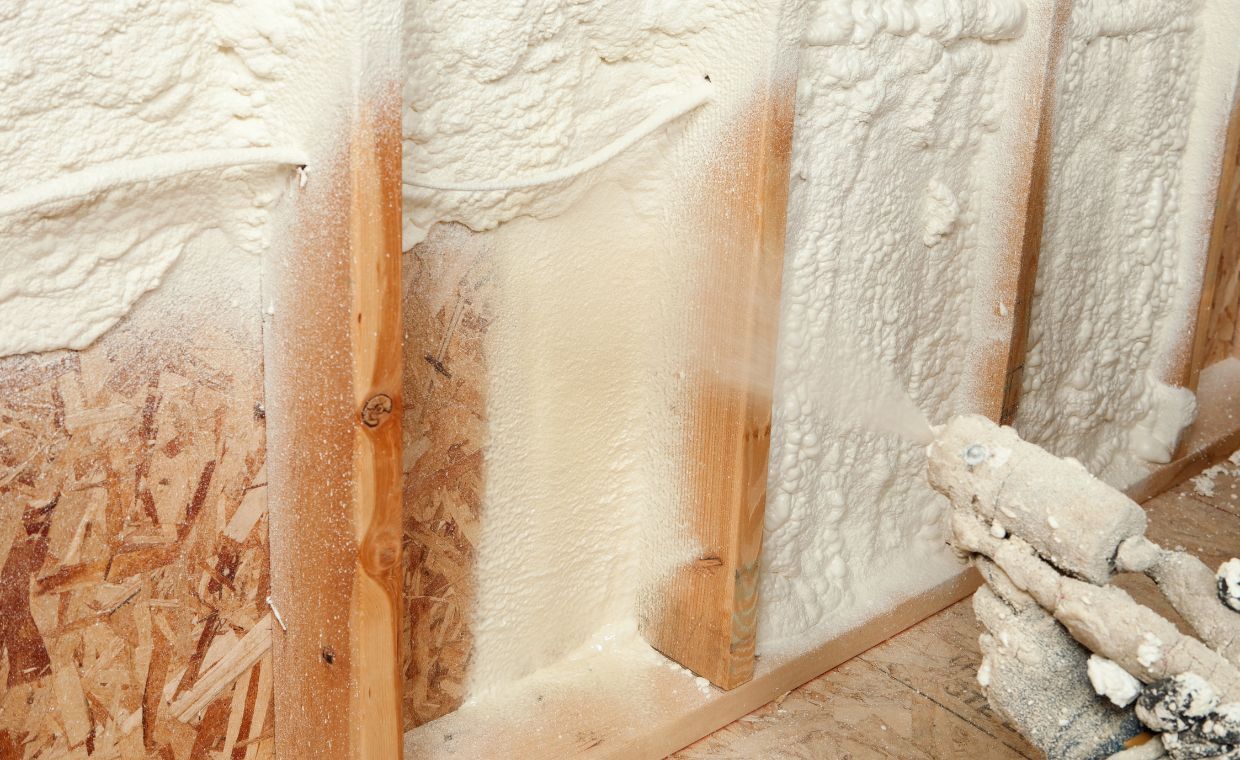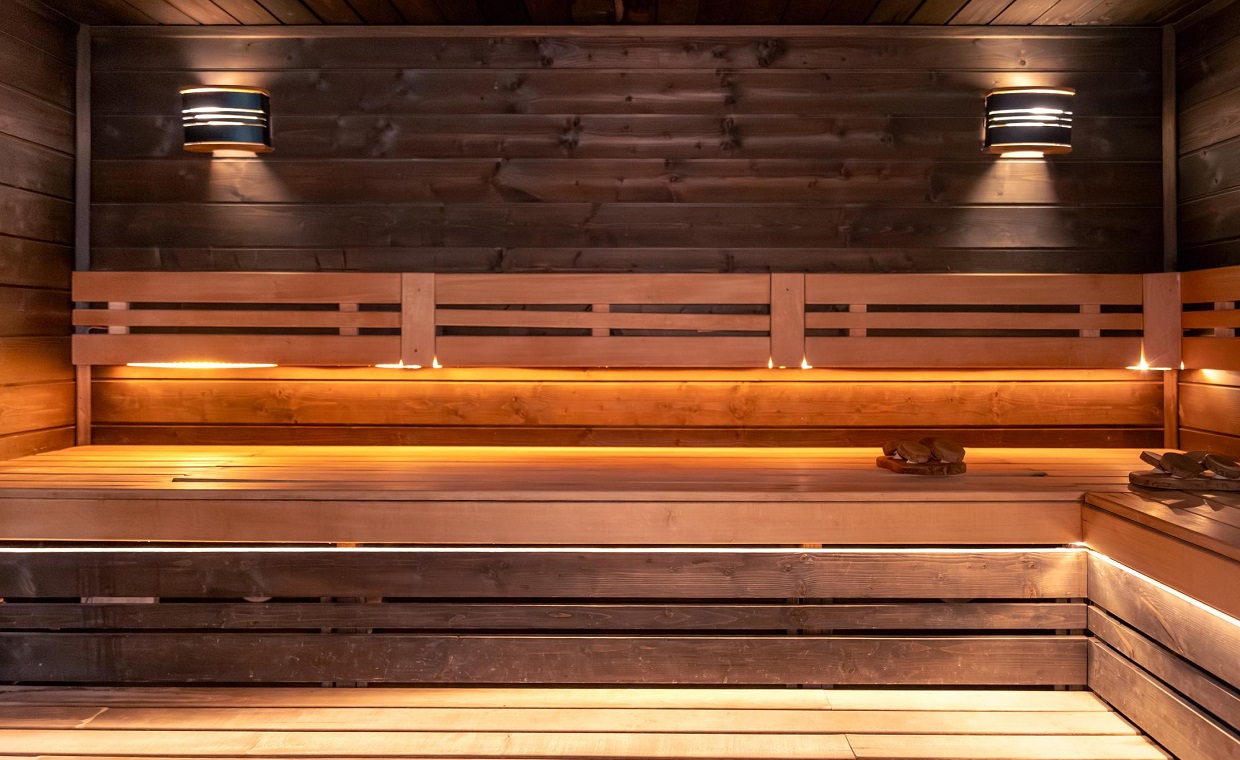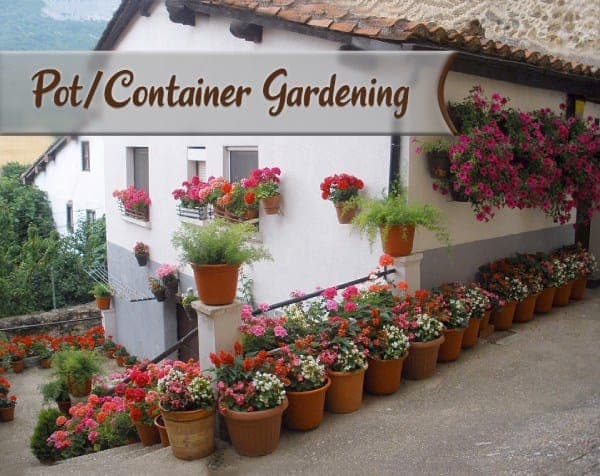
If you have a penchant for gardening, but do not have a full-fledged garden, there is no need to be morose. Even if you are surrounded by a concrete jungle, there is a way out by which you can grow flowers and vegetables. This modus operandi is known as container gardening, and various types of pots, half barrels, tubs, and planters can be used to grow practically whatever you have set your heart on.
Flowers, vegetables, microgreens, herbs – all can be grown in pots. When you use different kinds of pots like terracotta, plastic, ceramic and others, you bring an element of versatility to your balcony garden. What’s more? You can be very creative in placing the pots – simply put them on the ground, place them on a window sill, use a pedestal, or hang them from the balcony ceiling. The aesthetics of your outdoor patio can be remarkably enhanced with a touch of color and ambience, just by adding a couple of plants in pots.
According to ‘Miriam Illions’ the Co-Founder & CMO of Hometalk, an online home and garden community states that ‘Container gardening is popular among beginner gardener’. She explains, starting a garden is a hard task and can be expensive. But the pot / container gardening offers a low-maintenance and cost-friendly alternative, especially to those just looking to gain gardening know-how or share a gardening project with their children.

Here, we will talk about the size of the pots you should be using, different materials used for the pots, the steps to prepare the pots, and how to take care of them. So, what are we waiting for? Let’s get started…
Sizes of Plant Pots / Plant Containers
It is easier to grow plants in larger pots than smaller ones since the large pots contain more soil. In large pots, the soil stays wet for longer duration of time and is resistant to fluctuations in temperature. Small pots that are hung can dry out easily and you might have to water them twice daily during summers to keep the plants alive.
The size of the pots you use is also determined by what plants you are planning to grow in them. There are some factors that decide the depth and size of the pot. Think about a plant’s root system, whether it is a shrub, annual, or perennial, and the rate of growth. Plants that are rootbound and occupy all the area of the soil, dry out fast and do not grow well. Select a large pot for mixed gardening, one that will provide enough space for the roots for any plants you want to grow. Pots that have a lighter color keep the soil cooler than darker pots.
Another key thing that determines the size of the pot is the amount of space available for gardening, and whether the pots need to be moved later. If you have a balcony garden, ensure that the place can carry the weight of your pots and you can also lift and move the pots.
Types of Materials used for Container / Pot Gardening
You can use terracotta or clay, concrete, plastic and fiberglass, polyurethane foam, wood, metal, and so on for your plant pots. Each material has its pros and cons.
01. Terracotta Plant Pots
They are most common material used for container gardening. Though they are traditional and give an appealing antique look, they break easily. In regions of extreme temperatures, they can be damaged by thawing or freezing and are not suitable. Terracotta or clay pots are not apt for hardy perennials or shrubs that must be kept outdoors always.

02. Concrete Plant Pots
These are very durable and available in a variety of styles and sizes. You can expose them to all kinds of weather conditions. They are heavy, so may be unsuitable for balconies. You can try lighter concrete pots in which concrete is mixed with perlite or vermiculite, or blends of fiberglass and concrete.

03. Plastic Plant Pots
These are cost effective and light, as well as available in many shapes and sizes. Select the sturdy ones, and avoid the stiff and thin ones, which become brittle with age. Unused buckets and tubs can also be used as pots, thereby recycling the plastics and reducing the plastic waste.
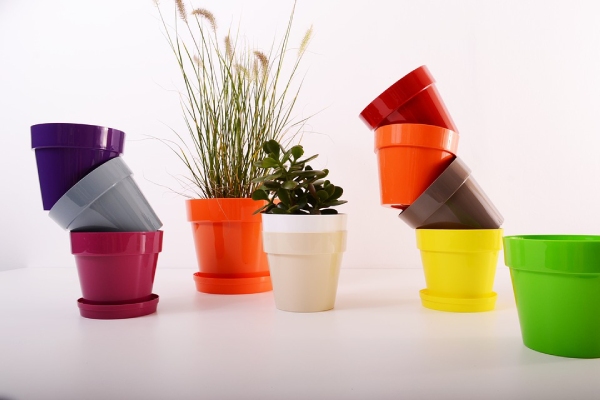
04. Polyurethane Plant Pots
These pots look similar to concrete and terracotta pots but are 90% lighter. They are resistant to cracking and chipping and protect roots against extreme temperatures and are ideal for outdoor plants.
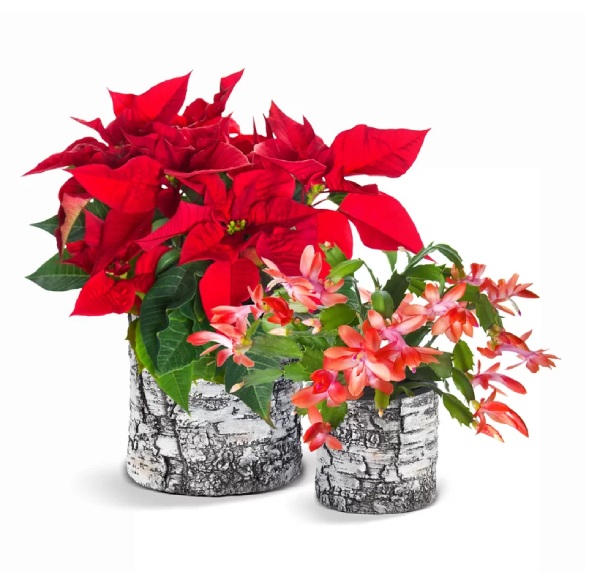
05. Wooden Plant Pots
These pots look natural and protect roots from temperature fluctuations. You can even build them yourself with cedar or locust. They are prone to termite attack and are not long lasting.

06. Metal Plant Pots
Metal containers are very durable and strong but expose roots to temperature changes since they conduct heat. From all metals, aluminium does not rust, nor required painting and costs less than some other metal options. The other metal options include stainless steel, zinc, lead, and copper.

07. Glass Plant Pots
They are mostly known as terrariums. You can create a terrarium containing soil and plants into your glass container. You can keep this glass container open or closed according to the plant type. Not all plants require the moist environment of closed terraria. Terraria are often kept as decorative or ornamental items into your rooms.

08. Ceramic Plant Pots
Ceramic pots / containers, can also be called as stoneware pots, are made from finely textured, light-coloured clay and then glazed. However, if a ceramic pot is left out in the cold weather it can still crack. They are inexpensive and available in a wide variety of colour glazes and designs.
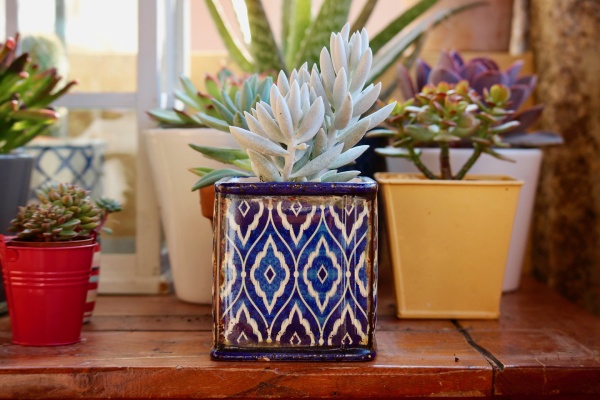
09. Fiberglass Plant Pots
Fiberglass planting pots are also synthetic, often confused with plastic as they are similarly lightweight; they are produced from fiber glass fibers mixed with resins that are formed into various shapes. At first glance, containers of fiberglass may even be mistaken for concrete, terracotta or even wood, as their versatility is incredible.
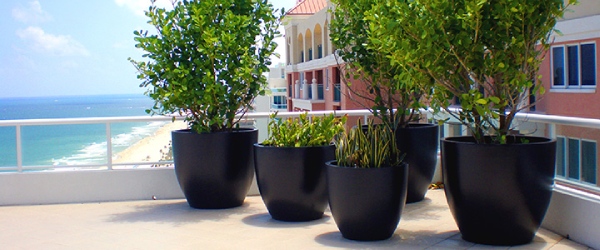
10. Coir Plant Pots
Coir containers / pots are economically and ecologically sound choices. These are planatable container made from coconut fiber and are studier than the pressed paper pots, but still retain the advantages of paper pots. These pots are cost-effective and can be found up to a standard diameter of 1 feet in wide range of colours and shapes.
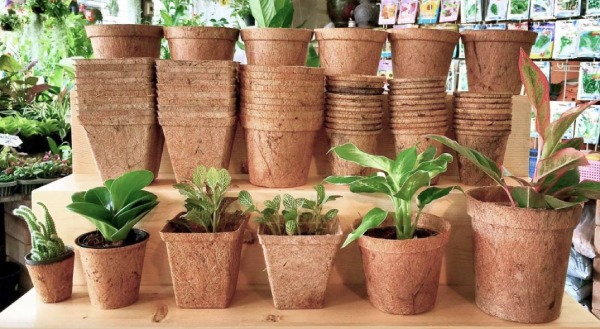
The reasearch based on boi-based pots, a special issue of the journal HortTechnology in 2015 looked at the alternative containers / pots for growing ornamental plants. According to ‘Sun, Y. et al’ says that coir containers / pots ‘Decomposes slowly in the landscape but does not restrict root growth (4-6 weeks after planting)’.
11. Fabric Plant Pots
They are lightweight, incredibly durable and at the end of the season, you can simply fold them up and put them away. They also available in multiple sizes. You can place them in colourful laundry baskets to jazz them up!
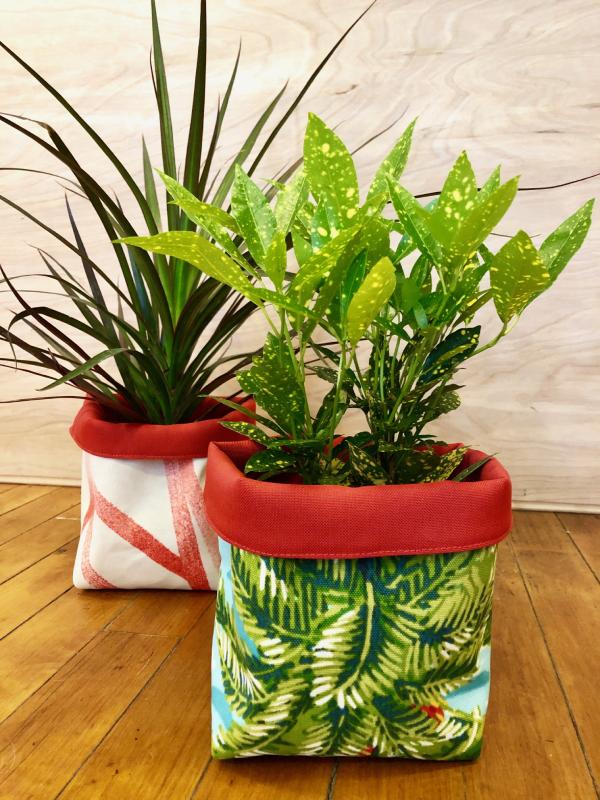
Steps to Prepare Pots for Planting / Container Gardening
Before you place a plant in a pot, here are few steps to guide you on how to prepare the pots or containers for your garden:

01. If it is a previously used pot, scrub both the inner and outer surfaces of the pot with a wire brush to remove any debris and dirt.
02. Soak the pot overnight in warm, soapy water. You can also add a capful of bleaching powder in this soapy mixture to prevent the plant diseases.
03. Rinse the pots thoroughly to get rid of bleach, soap, and any dirt that remains.
04. Place your pot or pots in the area where you want to keep them. Decide this first, as they will be harder to move about once you have filled them with soil and plants.
05. It is best to set your pots on bricks or clay “feet” to allow air circulation under the pots. This prevents the roots from soaking in water if the drainage hole gets blocked. It also keeps the pots from getting overheated and drying because of the direct contact with gravel or cement floors. You can buy casters, to wheel the pots easily, if you want to keep them moving around.
06. Put broken pottery, gravel or screening over the drainage hole at the pot bottom, so that the soil does not wash away when you water your plants.
07. You can put some packing materials in the bottom third area of your pot. This will save you some money for potting soil and makes the pot lighter. Do not do this, if you want to plan deep-rooted perennial plants that will need to use the whole depth of the pot for spreading their root systems.
08. Fill up the pot up to ½ inch (12 mm) of the rim with potting soil.
09. Water the soil deeply to prepare it for planting. You can set a gardening hose to a mild trickle to use a watering can. At least one inch of the soil should be wet after you water it.
10. Look under the pot to check if the water is draining away taking too much soil along with it.
Conclusion:
Now that you know a little more about preparing and caring for pots, do not wait but get started with container gardening! You can use a mix and match of all the pots we have discussed in this article to create a combination for your container garden. Or, you can select one material and follow a theme. Either way, you will have great fun growing different plant varieties in your pots and containers. Happy gardening!!
Also Read:
Landscape Architecture | Creating A Blissful Outdoor Spaces!
Awesome Indoor Gardening Supplies You Need for Your Home!
Image Courtesy: Image 5, Image 7 – ebay, Image 10, Image 11 – damrongsilp, Image 12 – buffalo.kidsoutandabout
Author Bio
Indrani Ghosh – In the fourth decade of my life, I decided that I needed something more. I needed to tell everyone my story, but in a way that people would read it. So I have become a part-time writer. My main profession is that of a technical writer and I have been part of the IT industry for 19 years now. I have worked for companies like TCS and Ericsson and clients like Johnson & Johnson, Citi Cards, T-Mobile, Visa, and many more. I love my job and have a great passion for life. My husband is my best friend and he is as passionate about life as I am, though in subtly different ways. I am a loyal friend, a skilled professional, a loving wife and hopefully, soon a published author! I am Easily Reachable on – Facebook, LinkedIn.


























